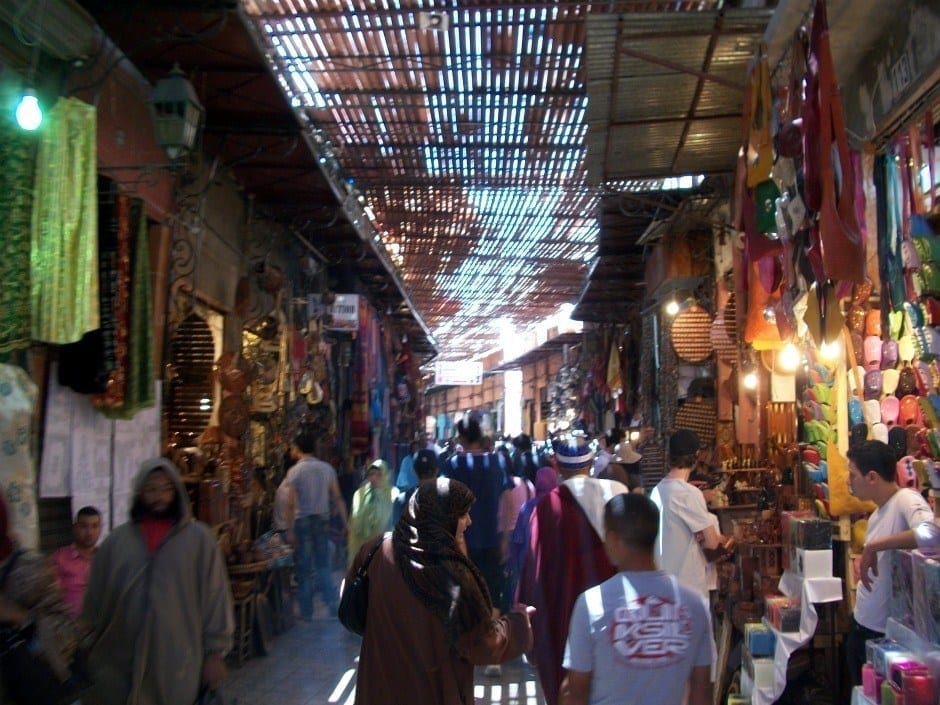There are a lot of classifications which do not apply to me: hippie, enviro, hipster, trendy, and beatnik are just a few. While you won’t find me snacking on granola in the nearest park sporting a pair of Birkenstocks anytime soon, that doesn’t mean I don’t care about minimizing the impact I have on the world around me. This is especially of concern while on the road, but there are several ways to minimize our travel impact.
1. Carbon footprint – This is one of the most problematic aspects involved with green travel. Unless you walk to your vacation spot, then you’re going to create a carbon footprint and, in the case of longhaul flights, the footprint may be the size of Sasquatch. The best option is one I have made fun of in the past, purchasing carbon offset credits.
This really is for the committed green traveler and is a sure fire way to assuage your first world guilt. The offsets offer financial support to projects that reduce the emission of greenhouse gases in the short- or long-term. Personally, I’m a little dubious and my jaded view is that we’re making someone very rich through the offsets rather than affecting real change. But, as I said, other than becoming a hermit, this is the only option available to travelers who want to mitigate their carbon impact on the world.
2. Hotels – An area where travel decisions CAN have a real impact on the environment are hotels. Last year I had the opportunity to stay at one of the most eco-friendly, sustainable properties in the world – the Tres Rios Resort in the Riviera Maya, Mexico. The attention to green planning is impressive and can be found in everything from the water supply to how elevators are powered. More importantly, it is clear that the staff are all equally committed to the same sustainable goals as the owners, which is key. To find a hotel that will meet your high environmental standards, it is important to research and ask questions. It is highly unlikely that you’ll be able to find properties as responsible as the Tres Rios around the world, but there are varying degrees of sustainable forethought.
- Ignore the token nods to green travel, like foregoing housekeeping service. This may have a slight impact, but is not really doing that much to help the environment. Rather, it’s an attempt to help the hotel’s public image.
- Ask about their water and energy supplies. Do they have a way to reuse water, rather than just consuming vast quantities from the general supply? How do they reduce energy consumption: low flow showers/toilets, enviro-friendly lighting, alternative energy sources?
- Be sure to call and ask the hotel personally about their green initiatives. If you’re met with silence, it’s time to move on. A property with a real commitment to sustainability will be able to recite its accomplishments instantly.
3. Food – Food is one of the most important aspects to travel, not just for sustenance, but for offering a unique glimpse into the region and culture of the travel destination. It’s also a potential pitfall for the serious green traveler. It starts at the hotel, and their own food practices. Do they recycle and compost? Where does their food come from? I spoke with the food and beverage manager for a large, multinational hotel chain on Oahu, Hawaii about their food sources. He told me that until a few years ago, almost all of their food came from the mainland; a tremendous waste of resources. Recent legislation in Hawaii though made it easier for hotels to use local farms, which has revolutionized the way they manage food. Now a majority of their food products come from Hawaii, which is good for the guests (better food), good for the local farmers and good for the planet.
- When looking for food around town, follow the hotel’s example and go local. Eschew large, international restaurants and instead seek out the small locally owned and operated establishments. While it’s more responsible, the experience will also be much more enjoyable.
- If you are feel peckish, ignore the Mars bar and go for fresh fruit or pastries from a local bakery. Once again, you’re helping the community but you’re also helping yourself.
4. Sightseeing – This category overlaps with the realm of responsible tourism, with a focus on cultural impact as well as environmental. From the green perspective, avoid large motor coach groups both for your sanity as well as respect for the environment. Instead look for individual tours or small groups to join for day trips or week long adventures. Also be sure to use and patronize local tour guides or companies, and try to add unconventional sightseeing stops on your trip. While it may be tempting to stop at a large tourist mega-store (not for me, but for some people) instead look for small shops or stalls with products made by people who live in the region. I’ve always had a sneaking suspicion that most of the “local arts and crafts” found in the popular souks actually had “Made in China” stickers affixed to them a few hours earlier. Also make an effort to meet people who live in the area and learn more about them and their lives. This isn’t as hard as one would think; talking about oneself is a universally adored hobby.
It may not always be possible to be a sustainable, green traveler, but with some small tweaks in your travel routine, it is possible to be a little more responsible as you trek around the world.
What are your green travel tips?






Matt, full praise from me for tackling what is almost a travel taboo subject.
Don’t give up hope when it comes to the high carbon footprint of long haul flights. One way is to reduce the the number of flights by flying long haul less, but taking longer vacations when there. Personally, I would suggest that anyone thinking that Offsetting is the answer should look at CheatNeutral.com first. As many of the off est companies are for profit companies, why not pay the offset money to an environmental NGO of your choice.
Good points on hotels and food is often overlooked but hugely significant. Also travelling First Class will create much larger carbon footprints and consume more valuable resources.
I can’t wait for a Bering Straits Tunnel to link North America to Asia and passenger ships where the carbon footprint per passenger is a fraction of the cruise liners plying the ocean. They are coming though.
Thanks John, I appreciate it and I too am awaiting that tunnel! :)
carrying less luggage with you when flying will reduce your carbon footprint. Less weight = less fuel.
As one who has green leanings but a strong travel lust, I salute your even handed look at this conundrum. Any activity that starts at the airport is hard to make green by it’s very nature. I find it easier to take steps in my daily life. Like you, I may change some behaviors but I will still get on the next flight.
Thanks for a very sensible green travel article. These are some of my food experiences in Cambodia:
At our tiny local market, you can buy apples and oranges from Cambodia or the U.S. The Cambodian fruit doesn’t look as nice, but tastes much better. Our locally grown produce is fresher and better tasting than the Thai and other imported produce.
When I have a sweet tooth, I buy some great snacks from local vendors. They cost almost nothing and taste delicious. The last time I gave in to the temptation for some Western comfort food (Oreos), I got terrible stomach cramps. They were out of date.
The only other time I’ve gotten sick here was when I had fish and chips at a Western run restaurant. The fish was frozen and had probably gotten unfrozen during power outages. When you can get fresh fish so cheaply, that’s just dumb.
Rob, thanks for the great food angle. Definitely some things to keep in mind. (I get credit for NOT saying ‘food for thought’) :)
Great brief article on a subject often made over-complicated by some writers. Shows how simple it is to make just a slight adjustment to our behaviour, lessen our impact and enhance our experience. Everyone wins. Simple.
What a very kind comment, thank you – I really appreciate it.
Matt, not sure how I missed this post because I read your blog regularly, but just found it from a tweet. You have succinctly described ways that those of us who may be a bit left of green in our travels, but still want to lighten our impact can make a difference – an “everyman’s” guide with easy-to-apply ways to be more responsible as we indulge our need to explore the world – and actually even add to our own experience (#2,3,4) while supporting the local economy. Great suggestions! Bravo.
Thanks Beverly, glad you found it useful :) And I post a lot, so no worries about missing a few :)
Nice job providing a focused and impactful post on Green Travel. As a rule, we always explore hotels with responsible practices first when finding a place to stay at a destination.
Another option that could offset airline travel is to donate locally towards re-forestation. The 1 million trees project in NYC is a great place to start.
Great tip Anthony, thank you!
Good article, Matt, and I agree with Tom Lewis’s comments that it’s hard to reconcile a love of travel with living green. But as Tom says, we can all do our bit by taking steps in our daily life to reduce our footprint.
Great tips, Matt! There are lots of great sustainable hotel options throughout the world for those willing to put in a little extra legwork. It’s interesting how people often assume an eco-friendly hotel means it isn’t as posh — so untrue! There are many swanky eco-friendly options out there.
One of my personal favorites is Bardessono in Yountville, CA. It has lots of cool green initiatives going on. Check it out if you haven’t already.
Thanks for a great read!